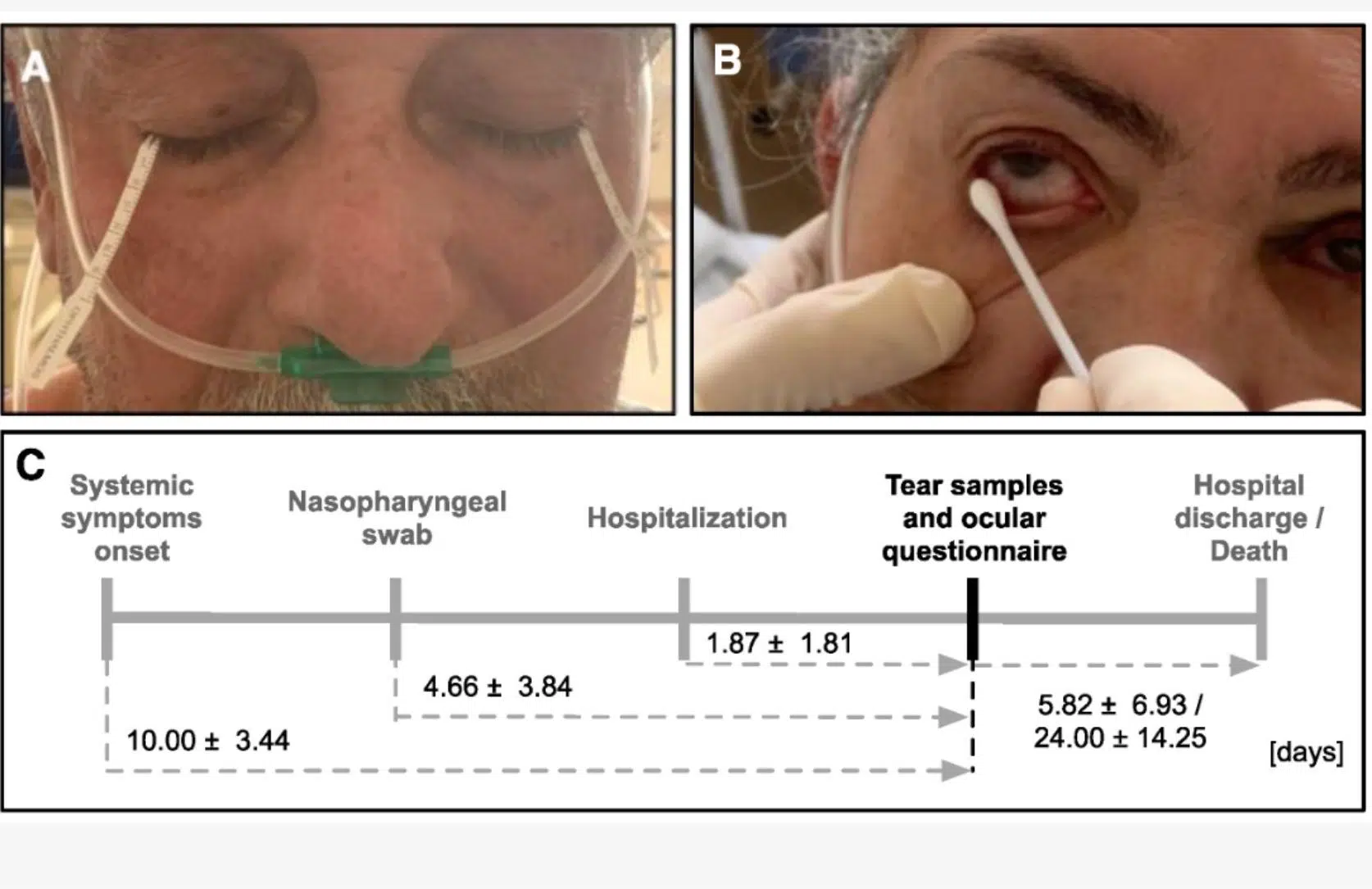
A recent study by São Paulo Research Foundation (FAPESP) published in the Journal of Clinical Medicine has found that SARS-CoV-2, the virus that causes COVID-19, can be detected in tears.
The study aimed to determine the prevalence of SARS-CoV-2 in tear samples and investigate whether it correlates with ocular findings and patients’ prognosis in Brazil.
Method and testing
The study analyzed tears collected using Schirmer strips (SS) and conjunctival swabs (CS) from 61 hospitalized patients, 33 of whom were diagnosed with COVID-19.
Of the confirmed COVID-19 patients, SARS-CoV-2 was detected in 18.2% of CS samples and 12.1% of SS samples. This means that the virus is present on the ocular surface, which could potentially spread through tears.
While subjective and objective parameters for dry eye syndrome were comparable between COVID-19 and non-COVID-19 patients, patients with tears testing positive for SARS-CoV-2 had significantly inferior Charlson Comorbidity Index (CCI) and higher mortality rates.
The CCI is used to rate comorbidities, and the results suggest that viral detection may relate to prognosis.
Among the COVID-19 patients exhibiting ocular symptoms, tearing was reported significantly more frequently when tear samples were positive for SARS-CoV-2.
Low tear production in patients

According to the study, a large proportion of patients, irrespective of their COVID-19 diagnosis, reported low tear production and discomfort in their eyes. This raises the possibility that the use of artificial tears may be necessary during hospitalization to alleviate these symptoms.
The results of this study are significant, as they indicate that tears can be used as a potential diagnostic tool for COVID-19.
While it is not currently a recommended method of testing, it could potentially provide a less invasive and easier method of testing for the virus.
Common methods for COVID-19 diagnosis
The most common diagnostic methods for COVID-19 are RT-PCR tests and antigen tests. These two tests and all other tests discussed below are based on the NCBI publication.
RT-PCR (Reverse Transcription Polymerase Chain Reaction) tests are the gold standard for COVID-19 diagnosis. These tests detect viral RNA in respiratory specimens, such as nasopharyngeal swabs or saliva, and can accurately identify the presence of the virus in the body.
Antigen tests, on the other hand, are rapid diagnostic tests that can provide results within minutes. These tests detect viral proteins in respiratory specimens and are less sensitive than RT-PCR tests.
Serological tests are another type of diagnostic test used for COVID-19. These tests detect antibodies produced by the body in response to the virus rather than the virus itself.
In addition to these diagnostic methods, imaging techniques such as chest X-rays and CT scans can also be used to detect COVID-19.
These methods can show abnormalities in the lungs that are consistent with COVID-19 infection, but they are not specific to the virus and may not be able to differentiate it from other respiratory illnesses.
See all the latest news from Greece and the world at Greekreporter.com. Contact our newsroom to report an update or send your story, photos and videos. Follow GR on Google News and subscribe here to our daily email!



